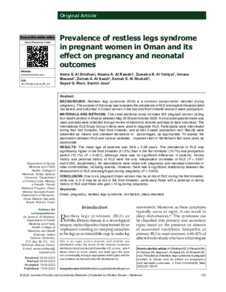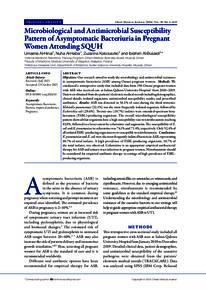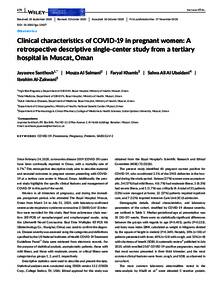Document
Prevalence of restless legs syndrome in pregnant women in Oman and its effect on pregnancy and neonatal outcomes.
Identifier
DOI: 10.4103/jfcm.jfcm_59_22
Source
Journal of Family and Community Medicine. v. 29, 2, p. 155-161
Contributors
Al-Rawahiyah, Naama A., Author
Al-Yahiyaiyah, Zuwaina K., Author
Masood, Imrana., Author
Al-Saadiyah, Zainab A., Author
Al-Shukailiyah, Samah S., Author
Rizvi, Sayed G., Author
Jose, Sachin., Author
Country
India
Publisher
Wolters Kluwer Medknow Publications.
Gregorian
2022-05-01
Language
English
English abstract
BACKGROUND: Restless legs syndrome (RLS) is a common sensorimotor disorder during pregnancy. The purpose of this study was to assess the prevalence of RLS and explore the associated risk factors and outcomes in Omani women in the first and third trimester and at 2-week postpartum. MATERIALS AND METHODS: This cross-sectional study included 305 pregnant women visiting four health centers in Muscat between May 2018 and October 2020. A structured questionnaire was used and data were collected through review of electronic records and face-to-face interviews. The International RLS Study Group criteria were used to diagnose RLS. Participants were interviewed during their first trimester, their third trimester, and at their 2-week postpartum visit. Results were presented as means and standard deviations or percentages, as appropriate. To assess the association between RLS and various variables, unpaired t-test or McNemar's test were used, as appropriate. RESULTS: The mean age at baseline was 29.8 ± 5.28 years. The prevalence of RLS was significantly higher in the third trimester (41.0%) than in the first trimester (15.7%) and postpartum period (15.1%) (P 0.001), although there was no significant difference in severity. Family history and personal history of RLS were the only independent correlates of RLS (P 0.001 and 0.002, respectively). No associations were noted with pregnancy and neonatal outcomes or other comorbidities, including anemia. However, there was a significant relationship between the development of RLS and weight gain during pregnancy (P = 0.023). CONCLUSION: One in six pregnant Omani women may be at risk of RLS during the first trimester, while one in 2-3 may be at risk in the third trimester, particularly those with a personal or family history of RLS and those who gain >12 kg during pregnancy.
ISSN
2230-8229
Category
Journal articles



